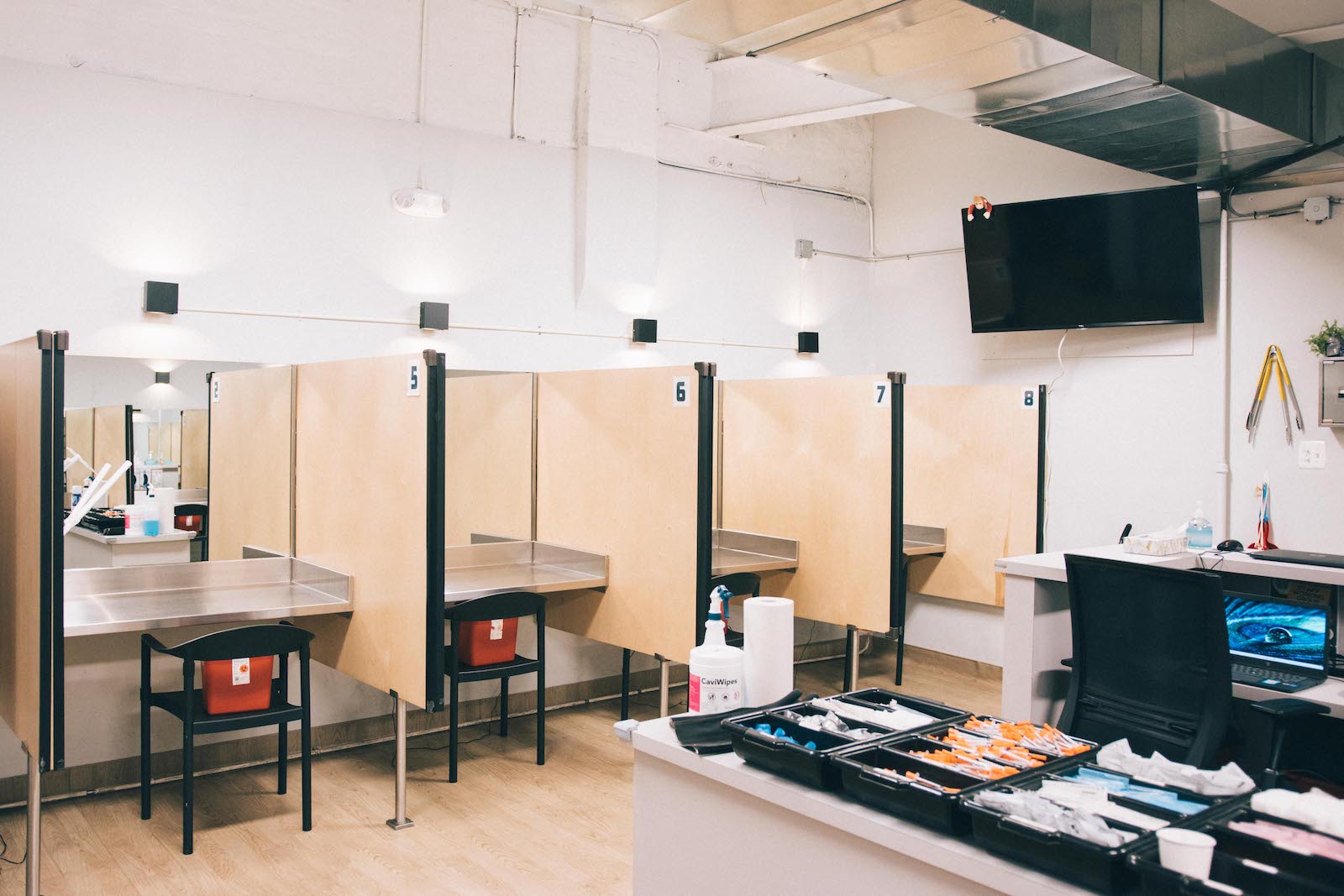Nearly 300 people across the country die of a drug overdose every day. This amounts to more than 107,000 people over the course of a year, according to provisional data from the Centers for Disease Control and Prevention. Many die because they were alone and out of reach of lifesaving care. Others die because people within reach did not know how to use, or did not have, the needed lifesaving equipment.
These deaths are preventable. We could prevent them if we knew when and where overdoses were occurring, so that we could ensure immediate lifesaving care.
It is my job to think about my patients’ wellbeing across the continuum of care. I see OPC as an essential component of this continuum.
The good news is that the United States is becoming increasingly receptive to a proven way that we can act to save lives: opening overdose prevention centers (OPC).
As a doctor in primary care and substance use disorder treatment, it is my job to think about my patients’ wellbeing across the continuum of care, from preventive services to acute lifesaving interventions. I see OPC as an essential component of this continuum.
Research supports OPC as an effective part of our continuum of care. Decades of evidence have found that these facilities:
* Increase uptake of drug treatment services, especially among people who distrust the treatment system and are unlikely to seek treatment on their own
* Reduce public drug use and syringe litter
* Reduce HIV and viral hepatitis risk behavior and bacterial infections
* Reduce frequency of drug use and overdose deaths
* Increase cost savings from reduced reliance on emergency medical services, increased preventive health care and increased drug treatment utilization
OPC are low-barrier health care. When implemented using a holistic care model, OPC are placed alongside services where people can receive health and wellness resources, such as food, bathrooms and showers, hygienic supplies, prescriptions, testing for sexually transmitted infections, counseling and referrals. And critically, OPC have a dedicated space where people can use pre-obtained drugs under the care of trained personnel who are ready to save lives.
OPC are preventive care. The cause of death from opioid overdoses is lack of oxygen, because people stop breathing during an overdose. People can receive the medication naloxone to reverse the overdose and allow them to breathe again. However, receiving naloxone can be an extremely painful experience for a person who is dependent on opioids, because it sends them into severe withdrawal.
OPC reduce the need for naloxone by having trained staff ready to act at the earliest signs of overdose. They administer less invasive strategies like oxygen therapy to stabilize breathing. According to the first-year report from OnPoint NYC, operator of New York’s two OPC, 83 percent of overdoses at its sites were treated and resolved without the need for naloxone. This also means patients were stabilized faster, preventing the need for emergency or hospital services for post-overdose monitoring. Fewer ambulance calls and hospitalizations mean less-burdened health care systems and public cost savings.
OPC are person-centered care. We are decades into the worst overdose crisis this country has ever seen and still, the default response to drug use is to punish people by arresting them, rather than treating it as a public health issue. To save lives and support long-term stability, it makes sense to offer people an OPC during vulnerable moments of drug use, rather than stigmatize them into isolation.
OPC support people and help ensure they survive overdoses, so they can continue to work toward wellness, however that looks for them.
OPC are often staffed by people with lived and living experience who can establish trusting relationships through loving support, and serve participants’ needs beyond drug use. This can help address trauma and untreated health conditions, as well as meeting basic practical human needs. OPC are versatile, and adaptable to the needs of specific communities and populations.
OPC support and stabilize chaotic drug use. I often hear the refrain, “just send them to treatment,” not recognizing that substance use disorder is a chronic condition that does not typically resolve after just one episode of treatment. Many people who struggle with substance use return to use following some form of treatment. OPC support people and help ensure they survive overdoses, so they can continue to work toward wellness, however that looks for them. Treatment readiness can change gradually or rapidly, and often can be facilitated by the presence of a trained support system that can respond to a person’s desire to reduce or discontinue their use.
OPC are health care. As a vital part of a comprehensive public health approach to reducing drug-related harms, they are supported by the American Medical Association (AMA), the American Society of Addiction Medicine (ASAM), the Association for Multidisciplinary Education and Research in Substance use and Addiction (AMERSA) and more.
Ending our overdose crisis means responding to it like the public health crisis that it is, and OPC are a necessary part of that response.
Photograph of OnPoint NYC overdose prevention center by Sarah Duggan
This article is part of a short series produced in collaboration with the Drug Policy Alliance to mark Overdose Prevention Center National Solidarity Week. The Influence Foundation, which operates Filter, previously received an unrelated restricted grant from DPA. Filter’s Editorial Independence Policy applies.




